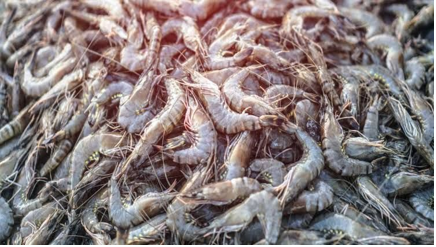INP-WealthPk
Azeem Ahmed Khan
Waterlogging and salinity are two major challenges facing Pakistan, rendering around 20 percent of its irrigated land unfit for traditional crop farming. These two interconnected issues are primarily attributed to impulsive flood irrigation and the discharge of industrial effluent into the water channels.

Recognizing the potential of this underutilized land, the government has launched a five-year “Pilot Shrimp Farming Cluster Development Project” to turn adversity into an economic opportunity, Project Manager Maratab Ali Awan told WealthPK.
Approved by the Economic Executive Committee of the National Economic Council (ECNEC) and sponsored by the Ministry of National Food Security and Research, along with provincial departments from Punjab and Sindh, the project targets shrimp aquaculture development in Punjab, Sindh, and Balochistan provinces, he said.
The Fisheries Development Board (FDB) is the main executing body, working alongside the fisheries departments of Punjab and Sindh. The project’s core objectives include promoting inland shrimp farming, developing a shrimp value chain and legal framework, creating rural employment, and boosting export earnings, the project manager said.
Shrimp, a marine species that thrives in saline water, is well-suited to Pakistan’s salt-affected regions. This strategic match allows the country to utilize non-arable land effectively for shrimp cultivation. Inland aquaculture can generate substantial economic returns. It is estimated that Pakistan, by utilising just a fraction of its saline land, could earn $1 to $1.5 billion from exports within 4-5 years, Maratab said.
Since its inception in 2019, the project has made considerable progress despite setbacks due to the COVID-19 pandemic. During the initial years, international consultants were unable to visit Pakistan due to COVID-19, halting essential technical planning. However, once restrictions eased, master trainers were invited, and around 750 individuals, including private farmers, government staff, and academia, received training in shrimp farming techniques.

He said a significant achievement of the project is the establishment of a model shrimp farm in Pind Dadan Khan, where water salinity ranges from 15 to 25 parts per thousand (ppt) – an ideal condition for shrimp growth. This facility will serve as a training and service center for farmers and is ready to begin cultivation, he added.
“One of the major gaps in Pakistan’s shrimp farming sector is the absence of a proper value chain. Shrimp feed and seed were not locally available when the project started. To address this, feed mills were subsidized by the Punjab government, leading to the production of commercial shrimp feed domestically,” Maratab said.
On the seed side, however, challenges persist. Shrimp hatcheries cannot operate inland because breeding requires marine water with salinity 35 ppt. A site was selected in Lasbela, Balochistan, and a 10.5-acre hatchery was planned with foreign consultation, the project manager said.
“Although its construction is pending due to administrative hurdles, the groundwork – designs and business plans – has been completed.” Meanwhile, private investors established Napoli centers in Karachi, which import baby shrimp and rear them into post-larvae, and then distribute them to inland farms, he said. Still, reliance on imported seed is a major bottleneck, he added.
Until government-funded hatcheries are built along the coast, the value chain will remain incomplete, limiting the sector’s full potential, he stressed. The FDB has urged the government to proceed with funding and construction of at least five to ten hatcheries along the coastline to ensure a sustainable supply of shrimp seed, he added.
Another breakthrough has been the establishment of a legal framework to enable shrimp export, Maratab Ali said. Pakistan lacked a National Residue Control Plan and traceability systems, which led to trade barriers when shrimp was exported, he explained. Under this project, he said, regulations were developed in consultation with foreign experts.
“The Marine Fisheries Department, which previously only regulated marine exports, amended its rules to include farm-raised fish and shrimps. With these changes, all fisheries products can now be legally exported, removing a major obstacle to foreign trade.”
With Punjab planning additional large-scale shrimp projects and a growing interest from private investors, the momentum for shrimp farming is building, he pointed out. However, without operational hatcheries and a fully developed value chain, the sector’s expansion will remain limited, he added.
The project, set to conclude in June 2025, has demonstrated the viability of shrimp farming in Pakistan, Maratab said. It has laid a strong foundation through training, infrastructure, and policy reforms.
If supported with continued investment and inter-provincial coordination, shrimp farming can emerge as a major contributor to Pakistan’s economy, turning its neglected lands into engines of growth, he stressed.
Credit: INP-WealthPk













